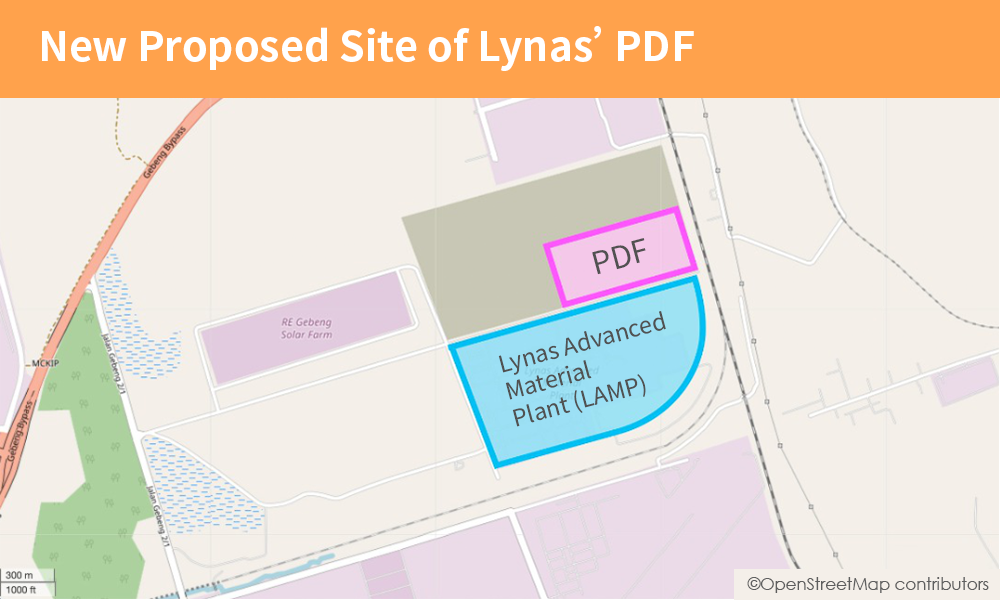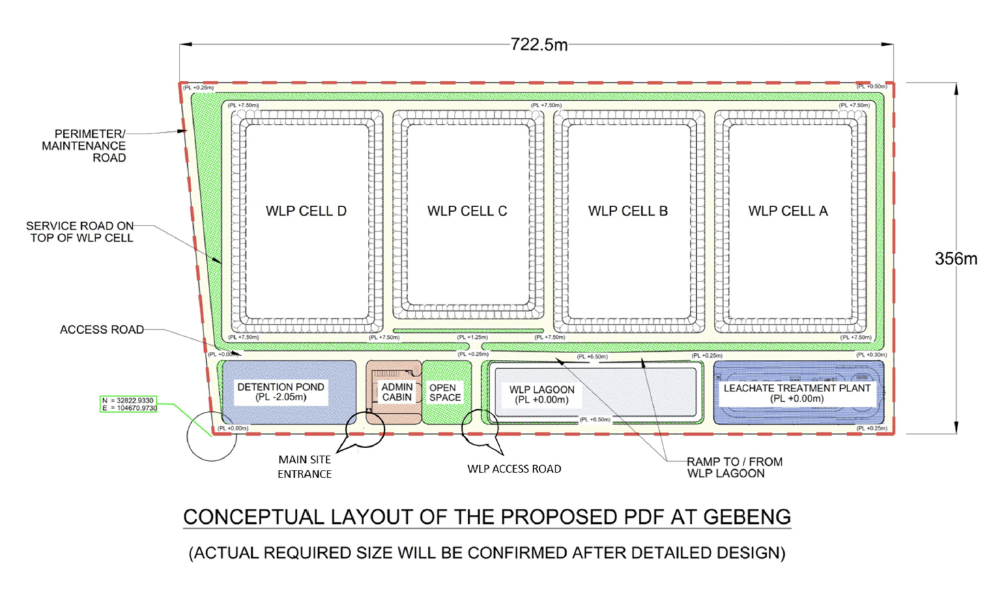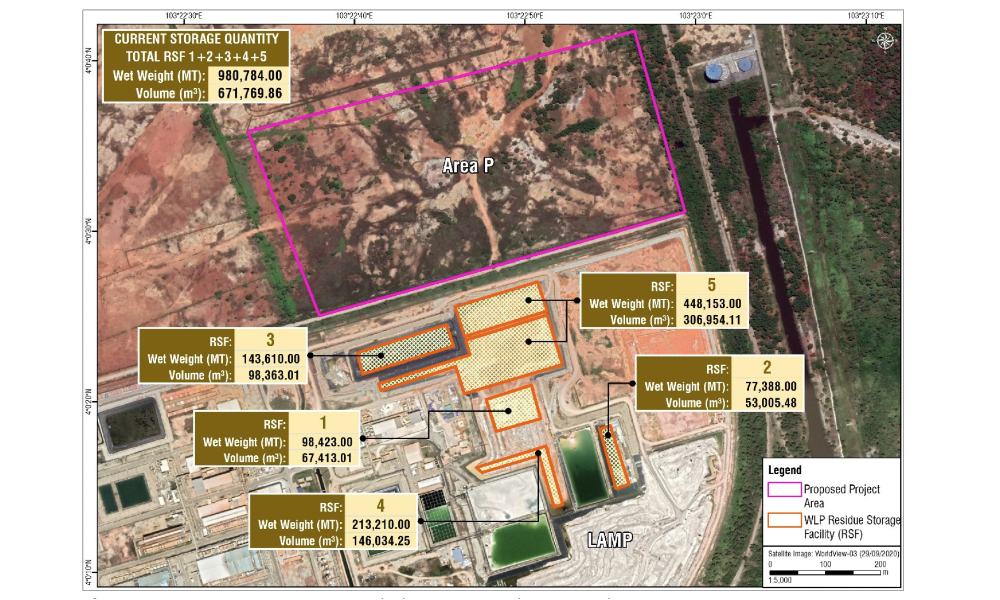Australian miner Lynas Rare Earths Limited must construct a permanent disposal facility (PDF) following Putrajaya's decision last year to renew its licence for three years along with a slew of conditions.
Among them, the PDF must be built within a year. But Lynas' plan to do so in Bukit Ketam - a forest reserve about 35km from Kuantan, Pahang - hit a snag following the Department of Environment's (DOE) rejection in April.
Although Lynas appeared to indicate that the Bukit Ketam plan was still on - it claimed that DOE needed further information on the proposal - documents sighted by Malaysiakini, however, showed that the firm is now seeking approval for another location.
The new site is located in the Gebeng Industrial Estate, on Lot 89798, which sits next to the Lynas Advanced Materials Plant (LAMP).

Meanwhile, DOE confirmed with Malaysiakini that Lynas is looking into building a PDF for its radioactive water leach purification (WLP) residue within the Gebeng Industrial Estate.
Officials from DOE also stated that the terms of reference (TOR) for the environmental impact assessment (EIA) for this new site were approved on July 14.
Furthermore, DOE said it is in the process of conducting an environmental impact assessment for the site.
On April 27, the DOE website revealed that it had rejected the EIA report of Lynas’ previous plan in Bukit Ketam. The report was prepared by EIA consultant company AGV Environment Sdn Bhd.
As for the new site, Gading Senggara Sdn Bhd (GSSB) remains as the contractor for the PDF but a different EIA consulting firm, Dr Nik & Associates Sdn Bhd, has been appointed.

According to the TOR document furnished by a reliable source, the new proposed site is 30m north of the Lynas plant.
The document stated that there were originally five options. Among them, the Bukit Ketam option was "dismissed" as it is located within the Bukit Kuantan Forest Reserve and upstream of potable water intake.
"The (new) site is already situated within the Gebeng Industrial Estate (GIE). Therefore, no land-use conflict is expected. This option is selected as the final option."
Pahang govt assisting to 'acquire back' the land
Based on documents sighted by Malaysiakini, Lynas and PDF contractor GSSB appeared to have reached an agreement with the Pahang government on the proposal, which would help clear obstacles pertaining to land matters.
The Pahang State Secretary Office, in a letter to GSSB, stated that the State Executive Council had "agreed in principle" for Lot 31375 to be used as an alternative location for the PDF.
The state government also agreed that Perbadanan Setiausaha Negeri Pahang (PSK) would apply to "acquire back" part of Lot 31375.
The land area involved is 28.328 hectares (70 acres) and is located in Mukim Sungai Karang, Kuantan District.
The state government nevertheless also emphasised that under the principle of "public interest", waste disposal sites cannot be constructed in industrial sites and the accumulated WLP residue at the LAMP site must be moved to permanent disposal facilities.
Malaysiakini has not been able to independently verify the authenticity of the leaked documents.
Pahang state secretary Sallehuddin Ishak, Lynas Malaysia and GSSB did not respond to Malaysiakini's queries at the time of writing.
Smaller area and storage volume
The proposed PDF in Gebeng requires a smaller land area than the previous plan in Bukit Ketam. The storage capacity has been slashed by 18 percent.
The proposed Bukit Ketam site involves 58.25 hectares of land. The original plan was to build two large-scale WLP residue storage cells with a total volume of 1.35 million cubic metres, equivalent to 540 Olympic-sized swimming pools.

However, the new proposed site in Gebeng is less than half (48.6 percent) of the original plan, and the storage capacity is only 1.1 million cubic metres, or about 440 Olympic swimming pools.
In terms of design, the new proposed PDF will have four parallel storage cells.
There are two major types of residue produced by the Lynas' rare earth processing plant - radioactive WLP and non-radioactive neutralisation underflow residue (NUF).
The WLP residue produced by Lynas has been accumulated in five interim residue storage facilities (RSF) in its LAMP site since 2012 and more will continue to accumulate until 2023.
After years of protests, Lynas has agreed to move its cracking and leaching process, which produces the WLP residue, back to Australia by July 2023.
Meanwhile, all existing WLP residue must be moved to permanent storage facilities. It is estimated that by 2023, the total WLP residue will be around 1.04 million cubic metres.

Rush to meet the deadline
Before the PDF can be constructed, it is crucial for Lynas to resolve a number of issues with several government departments and agencies.
For land-related matters, the firm must obtain the approval of the state government while the environmental impact assessment is subject to the approval of the DOE.
In addition, its licence renewal and radioactive waste management are under the purview of the Atomic Energy Licensing Board (AELB).
The Pakatan Harapan government originally wanted Lynas to send the WLP waste out of the country but then U-turned and allowed Lynas to build the PDF instead.
After the EIA rejection of the Bukit Ketam plan, AELB agreed to extend the stipulated deadline to construct the PDF to Sept 2, 2021.
This means that the firm has less than two months to do so.
In a statement to Parliament on July 16 last year, Science, Technology and Innovation Minister Khairy Jamaluddin said Lynas could lose its operating licence if it failed to meet all conditions set by Putrajaya. - Mkini



No comments:
Post a Comment
Note: Only a member of this blog may post a comment.